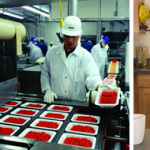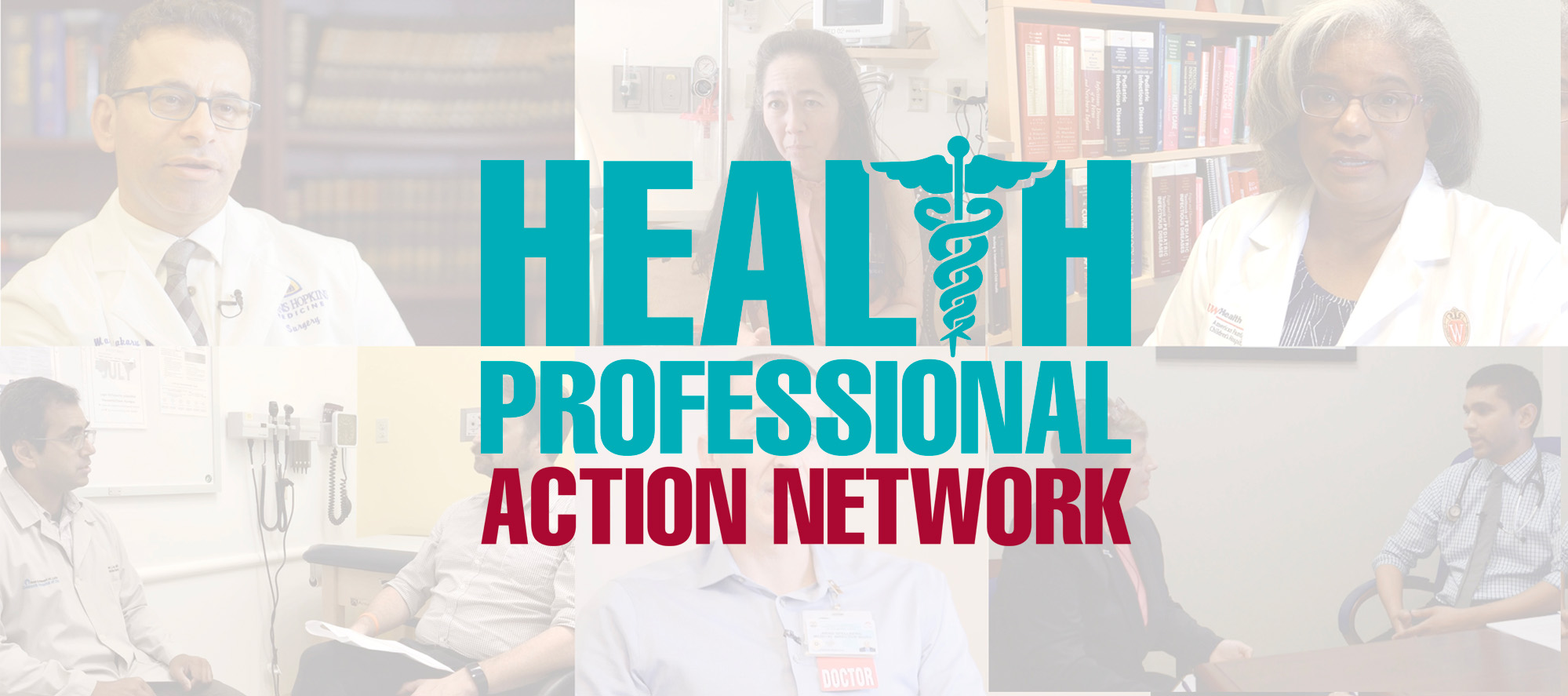
Food Safety Scares 2013
An alarming number of Oregonians continue to fall ill from preventable foodborne illness in 2013, almost 3 years after the passage of the Food Safety Modernization Act.
Downloads
OSPIRG Foundation

American Lives at Risk from Unsafe Food
NO PROGRESS IN REDUCING FOODBORNE ILLNESS
Over the past few years, Americans have grown accustomed to seeing headlines about tainted food being recalled and pulled off store shelves. These high-profile recalls leave many Americans wondering whether enough is being done to reduce the risk of contaminated food and foodborne illness. And they are right to do so—48 million people get sick from eating tainted food each year, and despite significant costs to our economy and Americans’ public health, the number of such illnesses, particularly from Salmonella, has remained stagnant for at least 5 years.
More needs to be done to protect Americans from the risk of unsafe food. But important rules, standards, and inspections that could significantly improve food safety have been blocked, underfunded, or delayed, allowing the drumbeat of disease outbreaks to continue.
Multistate foodborne illness outbreaks between October 2012 and October 2013 caused:
1,494 foodborne illnesses linked to multistate outbreaks;
335 hospitalizations linked to multistate outbreaks;
2 deaths linked to multistate outbreaks;
615 incidences of Salmonella linked to multistate outbreaks; and
643 incidences of Cyclospora linked to multistate outbreaks caused by food products.
This report offers a snapshot look, from October 2012 to October 2013, at multistate foodborne illness outbreaks identified by the Center for Disease Control and Prevention (CDC). Failures in the rules and processes that protect our food supply have led to numerous serious outbreaks over the past year that left many Americans sickened and at least 2 dead. The economic cost of just the multistate outbreaks caused by food products recalled over the past 12 months comes to more than $22 million.
The most important of these outbreaks involved high percentages of hospitalizations and cost millions of dollars:
Bagged Salad linked to E.Coli 0157 outbreak: This outbreak began in November 2012 and ended in December. The outbreak was linked to a common producer of pre-packaged leafy green, it spread across 5 states. The contaminated salads caused 33 known illnesses, which included 13 hospitalizations. Two people developed hemolytic uremic syndrome (HUS), a type of kidney failure, as a result of their infections.
Peanut Butter linked to Salmonella outbreak: An outbreak investigation was conducted in early September and ended November 30th. A total of 42 people have been infected with Salmonella Bredeney in 20 states. There have been 10 people hospitalized. This is a serious outbreak that is affecting our littlest consumers as the median age of victims is 7 years old. FDA concluded that Trader Joe’s Valencia Peanut Butter, manufactured by Sunland, Inc. of New Mexico was likely the source of this outbreak and suspended the food facility’s registration in November, 2012. This was the first time the FDA exercised its new authority under the FSMA to suspend a facility’s registration. CDC recommends that consumers get rid of any remaining jars of product in the home or return the product and warns that products like peanut butter have a long shelf-life, so they may still be lurking in consumers’ homes.
Cucumbers linked to Salmonella outbreak: In April 2013, the FDA alerted consumers about contaminated cucumbers produced by Daniel Cadenas Izabal and Miracle Greenhouse, a Mexico cucumber supplier, distributed by Tricar Sales, Inc of Rio Rico, Arizona. Testing by the FDA found Salmonella in cucumbers from this producer. A total of 84 persons have been infected with the outbreak strain of Salmonella Saintpaul in 18 states. There were 17 hospitalizations.
Chicken linked to Antibiotic-resistant Salmonella outbreak: This outbreak has sickened 338 people with 7 strains of Salmonella Heidelberg across 20 states. 42% of peopled affected by this outbreak were hospitalized. The USDA in conjunction with the CDC announced that the outbreak is coming from an unknown product of Foster Farms Brand Chicken. Foster Farms has yet to recall their products. Most of the ill people have been reported in California (232 people, or 73%). Seven strains of Salmonella Heidelberg bacteria have been identified as being linked to this outbreak. Ill persons infected with each of the seven strains were linked to consumption Foster Farms chicken. Four of these strains are rarely reported to PulseNet. the high hospitalization rate is twice the norm.2 An unusually high rate of blood infections (about 14%) requiring treatment with antibiotics has been reported in this outbreak.
Cyclospora outbreak in salad mix components: On August 12, Taylor Farms de Mexico voluntarily suspended production and shipment of salad components to the US. after Iowa and Nebraska investigations of Cyclospora linked the infection back to them. This outbreak infected 643 people over 25 states, resulting in 45 hospitalizations. Investigation of an Outbreak of Cyclosporiasis in the United States.
Frozen Berries and Pomegranate seed mix linked to Hepatitis A: A potential Hepatitis A virus contamination was spotted by Townsend Farms, Inc. in relation to certain antioxidant brands on June 4th; because of this, Townsend Farms started recalling several of their products. The outbreak sickened 162 consumers in 10 states and sent 71 to hospitals. Most cases were in the southwest region of the United States, notably California, Colorado, and Arizona. More than half of those infected were women, and 11 children age 18 or under were infected.
Salmonella Heidelberg Infections Linked to Chicken: This outbreak began June 4th, 2012 and ended by July 2013. Foster Farms Brand Chicken was found to be the most likely source of the outbreak. A total of 134 people were diagnosed with Salmonella Heidelberg with 33 hospitalized over 13 states. The states most affected by the outbreak were western states, Washington (57) and Oregon (40) notably. This is the same Foster Farms that also had a recent case of Antibiotic resistant salmonella.
Listeria linked back to Crave Brothers Farmstead Cheeses: The outbreak began May 20th 2013 and ended by September 2013. Listeria was traced back to the Crave Brothers Farmstead Cheese Company of Waterloo, Wisconsin. The company voluntarily recalled its Les Frères, Petit Frère, and Petit Frère with Truffles cheeses. The outbreak affected the northern United States mostly with one infection in Texas. There were a total of 6 cases in 5 states total. All 6 were hospitalized, 1 died, and one pregnant mother miscarriaged.
The above illnesses are just those confirmed to be part of a multistate outbreaks. In actuality, there are many more illnesses, hospitalizations, and deaths each year from foodborne sickness. The Foodborne Diseases Active Surveillance Network (FoodNet) reports that 19,531 infections, 4,563 hospitalizations, and 68 deaths associated with foodborne diseases were reported in 2012. 10 In 2011, the CDC estimated that each year about 1 in 6 Americans get sick, 128,000 are hospitalized, and 3,000 die due to foodborne diseases.
TRENDS IN FOOD RECALLS AND FOODBORNE DISEASE
TABLE A shows the total number of foodborne disease outbreaks and illnesses directly linked to multistate outbreaks in the United States from January 2012 to October 2013. There were 1,120 illnesses directly linked to multistate outbreaks in 2012. In 2013, however, there have already been 1,452 illnesses linked to multistate outbreaks.
Our food safety practices are clearly falling short. When comparing 2010 infection incidences with national health objective targets set by the Department of Health and Human Services, the only incidence rate that meets the target goal was the incidence of infection with E. coli O157. The incidence of Salmonella was three times the 2010 national health objective target, which is especially alarming, as Salmonella causes the majority of hospitalizations and deaths from foodborne disease.
THE COST OF FOODBORN ILLNESS
As the number of hospitalizations and deaths reported by the CDC show, foodborne illness can be much more severe than a simple upset stomach. Several foodborne illnesses can cause serious chronic health problems and death. Infection with a certain strand of E. coli bacteria can cause hemolytic-uremic syndrome, which causes kidney dysfunction and sometimes kidney failure. Certain types of Shigella, Salmonella, and Campylobacter bacteria can trigger the onset of reactive or chronic arthritis. If a pregnant woman is infected with certain types of Listeria monocytogenes, her baby is at risk for developmental delays, paralysis, or blindness.13 Not only do foodborne illnesses cause sickness and death, they are also detrimental to the economy. A recent study determined that the aggregated cost of foodborne illness comes to $77.7 billion per year.
Table B shows the cost by state of confirmed foodborne illness outbreaks. To calculate the costs we used the enhanced cost of illness model developed by Professor Robert L. Scharff. The model accounts for health-related costs associated with foodborne illness such as hospital costs, lab work and inpatient and outpatient care and also incorporates a value for pain and suffering and lost productivity.
CHALLENGES MODERNIZING FOOD SAFETY: NEW PROTECTIONS UNDER THE FOOD SAFETY MODERNIZATION ACT DELAYED
More must be done to protect Americans from the hazards of unsafe food. An important step towards reforming our food safety laws happened in 2011, when the Food Safety Modernization Act (FSMA) was signed into law. It aimed to ensure the U.S. food supply is safe by shifting the focus from responding to contamination to prevention, and putting in place more rules to protect produce, and strengthen inspections of food manufacturing sites. However, shortfalls in funding and rulemaking delays have left the promise of its new protections unfulfilled.
The FSMA requires the FDA to adopt new regulatory practices that focus on improving prevention, increasing company transparency, enhancing responses to outbreaks, and creating safer foreign food facilities. The implementation of FSMA now allows the FDA to issue mandatory recalls and perform many new preventative regulatory procedures.
If properly exercised, this new authority could significantly reduce the rates of foodborne illness. However, in reality the FSMA is not being implemented effectively or in a timely manner. FSMA called for the FDA to promulgate numerous major regulations on an expedited schedule, but several important rules have been significantly delayed in the Office of Information and Regulatory Affairs.
The Produce Safety Standards, submitted by FDA to OMB on 12/9/2011 but not returned until 01/04/2013, establishes standards for irrigation water, manure, worker-hygiene, and wildlife that may be sources of contamination of fresh fruits and vegetables.
Foreign Supplier Verification – part of a comprehensive import safety system, which makes importers responsible for the safety of the foods they import. This rule holds food importers liable for verifying that their foreign suppliers have adequate measures in place to prevent adulteration and contamination. U.S. companies that buy food products made in overseas facilities would be responsible for inspecting those facilities, periodically testing their shipments, and evaluating the supplier’s written safety plans. Any company that imports food without having an adequate verification program in place would face penalties.
Prevention-based requirements– food companies will be required to develop food-safety plans that will identify possible sources of contamination and specify actions to address them.
FSMA Proposed Rule for Preventive Controls for Human Food: The rule was submitted to OMB 11/22/2011 but not returned until 01/04/2013.When they finally are put into use, these controls should significantly reduce the rates of foodborne illness. Facilities will need to put in place sanitation and preventive controls that are based on a scientific hazard analysis and establish performance standards to measure the implementation of proper food safety procedures. 18
Other FSMA requirements: FSMA mandates inspection frequencies based on a facility being identified as high-risk (HR) or non-high-risk (NHR). High risk facilities must be inspected at least once in the first 5 years following enactment of FSMA and then once every 3 years thereafter. NHR facilities must be inspected at least once in the first 7 years following enactment and then once every 5 years thereafter.
Even more than for facilities inside the U.S., FSMA calls for increased inspections of foreign facilities and puts teeth into the requirement that foreign facilities be subject to inspection. If the FDA is denied entrance to a facility, whether by the facility’s owner or by a foreign government, food from that facility cannot be imported into the United States. However, with over 254,000 foreign establishments to inspect and 50 staff in its 13 foreign offices, the agency is ill-equipped to oversee this number of facilities. 20 One important reason for the ineffective implementation of FSMA is simple: the FDA is not being given adequate funding to do the job. The Obama administration’s 2014 budget calls for an increase in FDA funding, but the most money would come from fees that the food industry and Congress oppose. Leaving aside user fees, post-sequester and post-shutdown, the FDA, like other agencies, would benefit from being fully funded.21 Beyond the funding shortfalls, there are clearly still several shortcomings of FSMA and of our food regulatory system that threaten food safety. For example, companies are allowed to take up to 18 months to put in place food safety plans, and government inspectors have up to five years to visit high-risk facilities with inspections required every three years thereafter.22 This not an effective way of inspecting high risk facilities. A system of inspections every three years would also risk problems going undetected for long periods of time.
The new law reforms the operations of the Food and Drug Administration (FDA), which is part of the U.S. Department of Health and Human Services (HHS), but does not change the practices of the Food Safety and Inspection Service (FSIS), which is part of the U.S. Department of Agriculture (USDA). There are also about 15 other federal agencies that take part in food regulatory practices, but the FDA and the FSIS together comprise the two main components of the government’s food regulatory system. The FDA sets and enforces standards through inspection for all domestic and imported foods except for meat, poultry, and processed eggs, which are the responsibility of the FSIS.
The Government Accountability Office (GAO) concluded the American food regulatory framework is fragmented, with responsibility for different foods divided up among various agencies. GAO stated that FSMA “strengthens a major part of the food safety system; however, it does not apply to the federal food safety system as a whole.”21 As discussed earlier, FDA regulates 80 percent of our food supply, but meat, poultry, and eggs are controlled by FSIS under the USDA, which is unaffected by the bill. FDA cannot implement mandatory recalls of meat and poultry, nor can they increase inspections of such facilities.
CONCLUSION
The task of reducing foodborne illness is not an easy one. Many federal and state food safety laws were enacted at the beginning of the 20th century. They are now outdated and unable to effectively protect us from foodborne pathogens, particularly in an environment where more and more foods are imported. The rules and inspection systems we have now are not up to the task—and as this report documents, the result has been that the problem of foodborne illness has stayed stagnant and potentially grown worse, taking a substantial toll on public health and our economy.
The Food Safety Modernization Act was an important step towards an improved system that can at last reduce consumers’ vulnerability to unsafe food. But its promise has so far remained unfulfilled, and more must be done to prevent costly disease outbreaks:
Congress needs to provide FDA with sufficient funding to effectively implement the food safety measures mandated in the new FSMA law.
FDA needs to ensure timely implementation of FSMA programs and regulations.
The FDA should perform more frequent and unannounced inspections of high-risk food facilities.
The FDA should issue strict standards by which auditors should be judged, and exercise rigorous oversight of both accrediting bodies and auditors in order for the third-party certification program to protect food imports.
The USDA should declare antibiotic-resistant Salmonella an illegal food adulterant. Antiobiotic-resistrant strains of Salmonella are a particular threat to human health because they are resistant to many of the drugs normally used to fight infection, which reduces the medical treatment options available, resulting in more severe disease outcomes.
FSIS should have mandatory recall authority. In order to strengthen the agency’s authority, FSIS should ask Congress to provide it explicit authority to fully enforce its pathogen reduction performance standards, require companies to conduct a recall and levy financial penalties.
There needs to be greater coordination between the FDA, USDA, CDC, FSIS and other federal agencies to ensure our food is safe.
SEE PDF FOR TABLES AND FOOTNOTES.
Topics
Find Out More


The food we waste could end hunger

Superbugs in Stock

